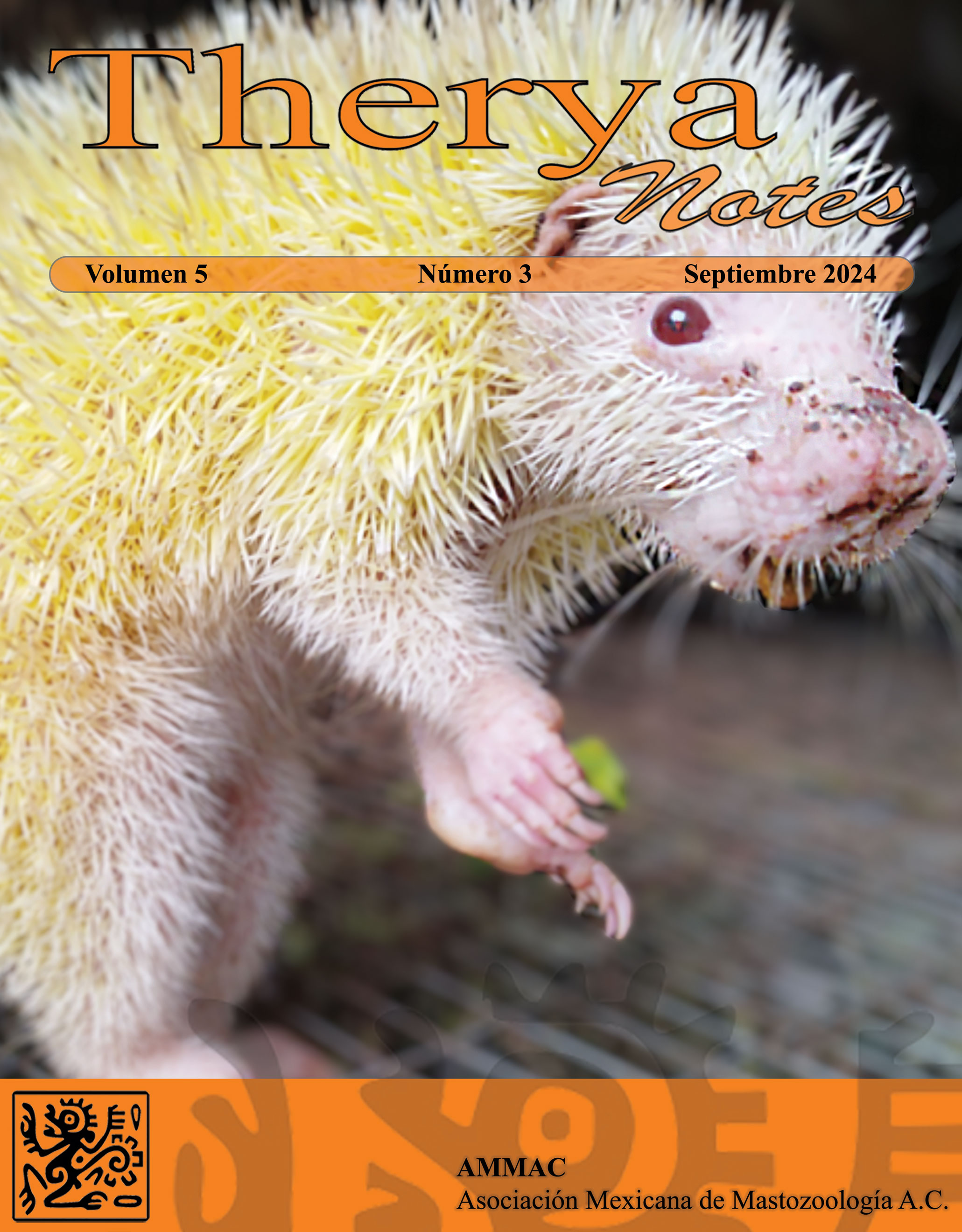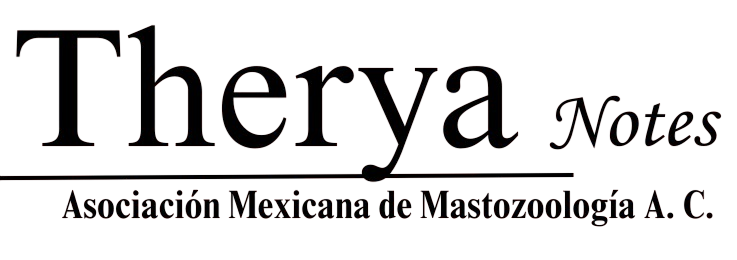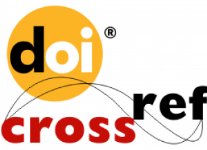First record of a Physalopteridae parasitizing a specimen of Bassariscus astutus from Hidalgo, México
DOI:
https://doi.org/10.12933/therya_notes-24-178Keywords:
Helminths, larvae, nematode, ringtailAbstract
The study of helminths in the Procyonidae of México is scarce, with 4 species of acanthocephalans, 8 species of nematodes, and 6 species of flatworms being recorded. For Bassariscus astutus, the cestodes Mesocestoides bassarisci and Taenia pencei are known, as well as unidentified nematode larvae. The objective of this work is to add a new record of a nematode to the helminth fauna that parasitizes B. astutus. Four dead B. astutus were obtained from 3 locations in the state of Hidalgo. The viscera of the hosts were examined, and a nematode was found in the stomach of one host. The helminth was fixed and kept in 70 % alcohol for identification. A third-stage larva of the Physalopteridae family was identified by having 2 lateral pseudolabiums in the cephalic region, formed by 3 lips. The middle lip has 4 teeth, 3 internal and 1 external. Each lateral lip has a rough area. Finally, the cephalic region is surrounded by a cuticular fold called a hood. This is the first record of a Physalopteridae parasitizing B. astutus in México. The Physalopteridae family includes the genera Physaloptera and Turgida, both of which have 4 teeth on the middle lip. Our specimen, as it exhibits the above features in addition to the presence of a hood, could be considered a member of the genus Turgida. However, due to the absence of the number of uterine branches that differentiate adults of both genera, we cannot confirm that it is a Turgida.
Downloads
Published
How to Cite
Issue
Section
License
THERYA NOTES is based on its open access policy allowing free download of the complete contents of the magazine in digital format. It also authorizes the author to place the article in the format published by the magazine on your personal website, or in an open access repository, distribute copies of the article published in electronic or printed format that the author deems appropriate, and reuse part or whole article in own articles or future books, giving the corresponding credits. The Creative Commons CC BY-NC-SD license is used.![]()















